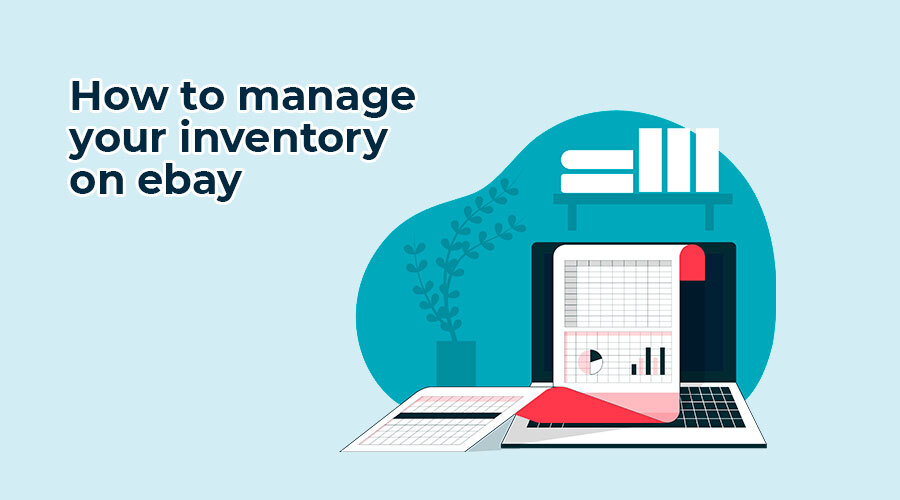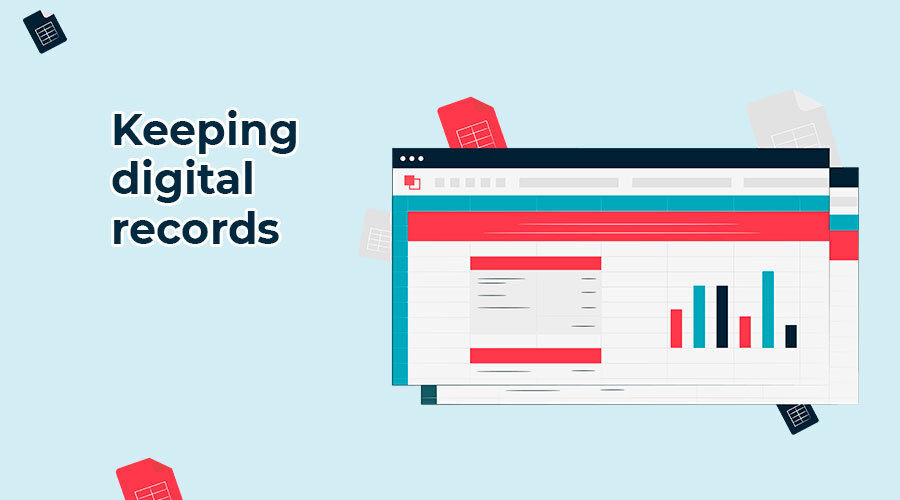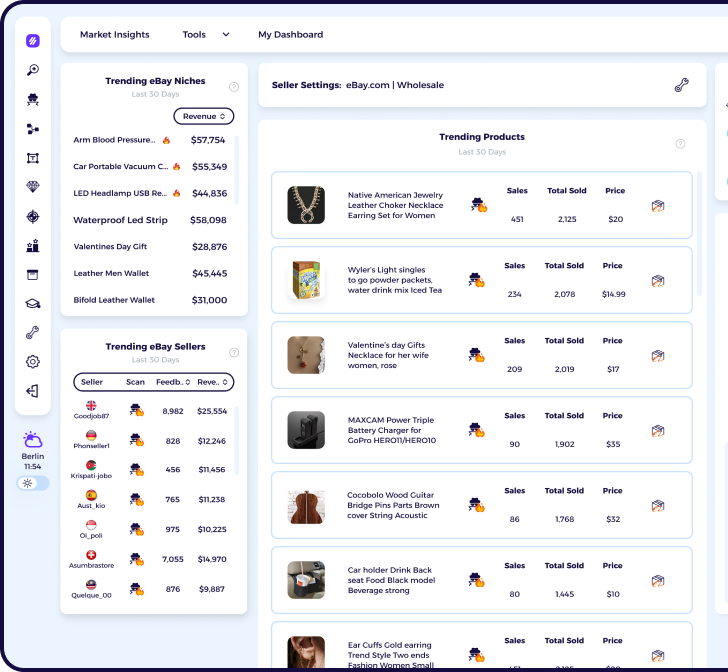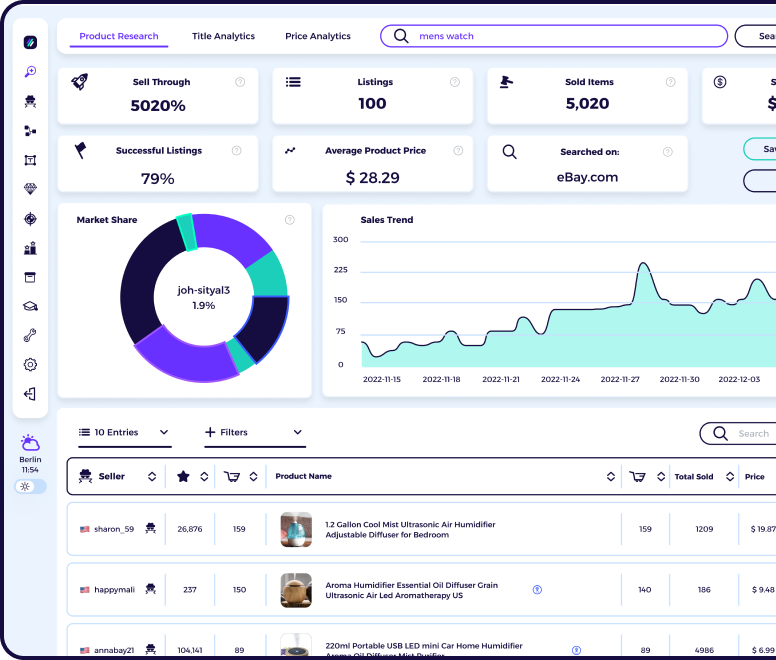A company’s inventory is one of its most valuable assets. In retail, manufacturing, food services, and other inventory-intensive sectors, a company’s inputs and finished products are the core of its business. A shortage of inventory when and where it’s needed can be extremely detrimental.
A very crucial part of your eBay business going well is how skillfully you manage your inventory. Your profits not only depend on the quality of your products but also on how well you’re able to record statistics regarding them, for instance; which products are selling more efficiently, and which ones are underselling.
Managing and noting these specifics when you have so many other things on your to-do list might seem like a hassle, so here are some great ways to make your life (and business!) a little easier.
Quick Navigation
Basics of Inventory Management
Why inventory management is the backbone of your business
How to Manage Your Inventory on eBay
Storing Your Products
1. Cycle Counting
2. RFID
3. Barcode Scanning
Keeping Digital Records
1. Spreadsheets
2. eBay inventory management software
How to Boost Your Sales through Sales Management
1. Moving under-selling stock
2. Predicting sales trends
Summing it up
Basics of Inventory Management
Inventory management is a systematic approach to sourcing, storing, and selling. In more explanatory terms, it means to keep a record or check about each kind of product you’re selling. The inventory gives you a lot of information to work with. You can use this information later to analyze trends, determine your top products, check stock levels so that you can stock up on a product even before its demand skyrockets.
However, inventory management is not only limited to keeping tabs on products. As a part of your supply chain, inventory management includes other aspects such as controlling and overseeing purchases — from suppliers as well as customers — maintaining the storage of stock, controlling the amount of product for sale, and order fulfillment.
The Backbone of Your Business
Inventory and stock management is the fundamental building block to the longevity of any business. When your stock is organized, your business will be less prone to complications like wrong shipments, out-of-stock products, and so on.
The process not only allows you to keep track of your inventory but also offers a centralized view of the entire stock. An excellent inventory management program will also give you detailed reports on your sales allowing you to cut down costs and make informed decisions.
One of the other powerful features of a reliable eBay inventory management system is its ability to identify data trends and forecast future sales. These reports will give you the edge over your competitors and allow you to exceed customers’ expectations.
Too little inventory when and where it’s needed can create unhappy customers. But a large inventory has its own liabilities — the cost to insure it, and the risk of spoilage and damage. Inventory management will guide you through every step providing you with a great summary of your current inventory status.
How to Manage Your Inventory on eBay
E-commerce has already made our lives much easier by giving us alternative options for inventory management as opposed to the medieval compulsion of having physical records of everything. That being said, it can still get very overwhelming when you’re selling hundreds or thousands of products all over the country (or world).
The primary goal always remains to ensure that all kinds of materials are accessible whenever the production department needs them. This way the production is not stopped or slowed down due to a lack of resources.
Needless to say, inventory management is an extensive process and may take some time depending on your preferences. Let’s look at the different ways that you manage inventory both physically and digitally.
Storing Your Products
When storing your products it’s extremely important to label each item and keep records of the stocks. Going the extra mile to ensure you have an organized warehouse can save you hundreds of hours down the road.
Furthermore, keeping everything organized is one of the fundamental rules of product cataloging. Below we have discussed some of the ways you can keep a record of your items for effective inventory management.
1. Cycle Counting
Cycle counting is a popular physical inventory method that takes less time than a full stock count because it takes only a partial count. In cycle counting, you partially count merchandise on a rolling basis so that the sum of each inventory part adds up to the whole. A small section of the warehouse or one SKU category can be counted monthly to keep the entire inventory updated.
2. RFID
RFID stands for radio frequency identification device, and it’s an inventory management and control technology used throughout many industries. Chips embedded into packaging help you track its location. It’s used frequently as a loss prevention technique but it can also help you with your physical inventory, too.
3. Barcode Scanning
Scanning barcodes is the most efficient way a small business can manage its stock inventory. We see barcodes everywhere we go, from sides of cereal boxes to equipment in manufacturing plants. A barcode inventory system consists of a few different components: a scanner, software, and a printer. Both the scanner and software are often integrated and function both on desktop computers and mobile devices.
Depending on the size of your business, you must also revisit your warehouses after some period. Many retailers do so twice a year, but others find that an annual or every-other or cycle count method works for them. Even though physical inventories require more labor and effort, they are good to use after every few months. As for weekly or monthly inventory management though, sales and data management is more preferred.
Keeping Digital Records
Computers cannot monitor and keep track of your physical stocks and dealings. If we want any help from computer systems, we must organize our business reports in proper digital format. Everything from detailed records of your stocks to order history and sales must be stored using soft technology like spreadsheets. Below we have discussed some ways you digitally store your data.
1. Spreadsheets
Using spreadsheets is a good and cheap way to record your business if you’re a new and small-scale seller. It allows you to input various details but if your business is growing rapidly then it becomes inconvenient because a lot of time is lost in the input of the data and updating it as compared to managing orders and shipments.
2. eBay inventory management software
eBay inventory management software and tools enable you to track goods and inventory levels across the supply chain of your business. Think of it as a solution that maps the entire journey of your products. Right from the order placements with your vendor to its delivery to your consumers, the software tackles it all.
A proven and successful eBay inventory management software facilitates tracking of your entire inventory – both raw material and finished goods. It also incorporates functions to forecast inventory levels to serve customers better. An effective inventory software contains barcode scanning capabilities to free you from data errors and offer automation and is compatible to support international eBay sites.
At the same time, it provides real-time alerts and updates to save you from out-of-stock/overstocking scenarios. You must also make sure that your eBay inventory management tools are scalable and offers seamless integrations with other systems, such as an accounting software.
How to Boost Your Sales through Sales Management
Depending on your inventory management solution, you may end up with a large amount of data to work with. If used correctly, this data can help you identify customer trends and buying patterns and is an effective tool for sales management. You will be able to determine the performance of a product and then take the necessary actions to benefit from the information.
New to selling on eBay? Check out our beginners guide here
Learn how to optimize your inventory and predict sales with this helpful video
1. Moving under-selling stock
It is always preferred to move the stock that is under-selling to clear warehouse space for more stock that sells well. Your eBay inventory management software should be able to make this distinction for products that stay for too long in your inventory which will allow you to stay on top of your eBay orders.
2. Predicting sales trends
Having a good eBay inventory management system should enable you to make calculated predictions of what products will sell well (and thus you’ll need more stock) and when to add it to your eBay store. These pinpointed directions will help steer you (and your business) to success! Doing this is a hidden secret that successful eBay sellers keep under wraps and is what separates beginners to people who treat their eBay business seriously!
Summing it up
Your eBay inventory management program may seem like it consists of menial tasks like sourcing products when they run out but spending time and money on it is important for your profits to grow. It’s going to ensure that you’re able to fulfill incoming or open orders, save money (instead of wasting it on useless re-orders), improve cash flow and satisfy your customers.
Despite there being an abundance of ways of managing your eBay inventory, it is preferable to use a trial run method to find out which method works the best. In the end, it is up to each business to choose which methods of stock management suit them the best and give the best output.











